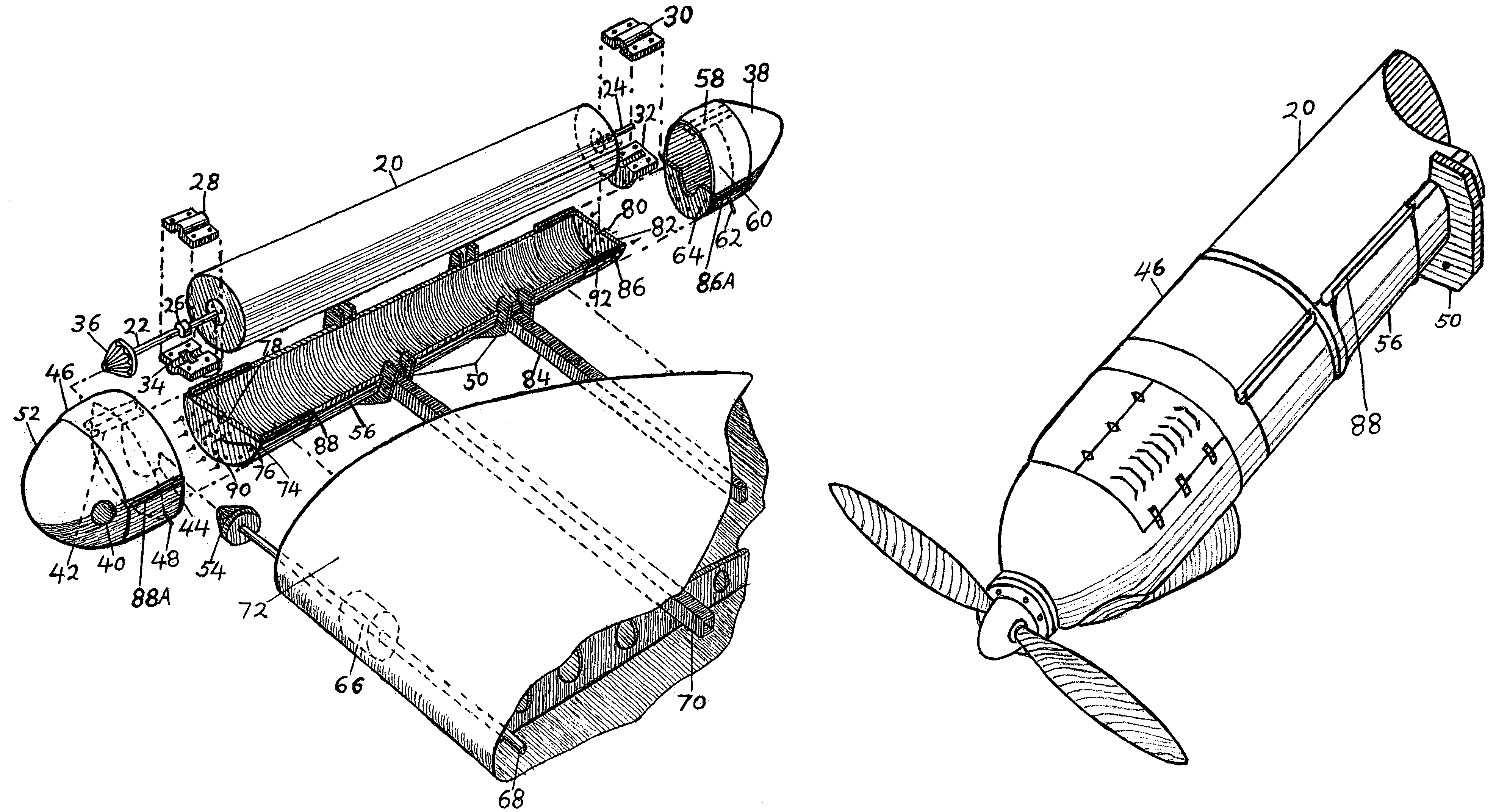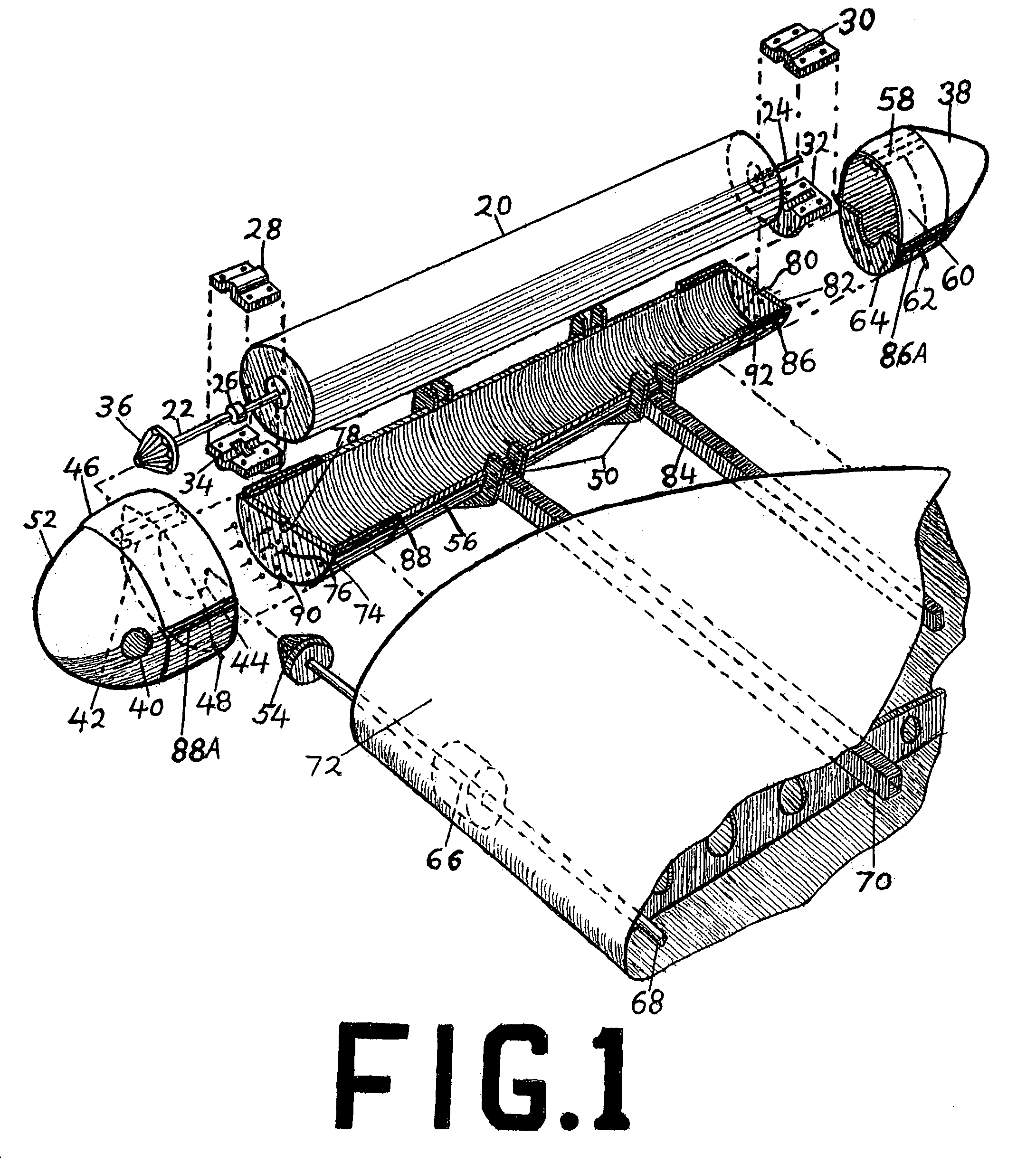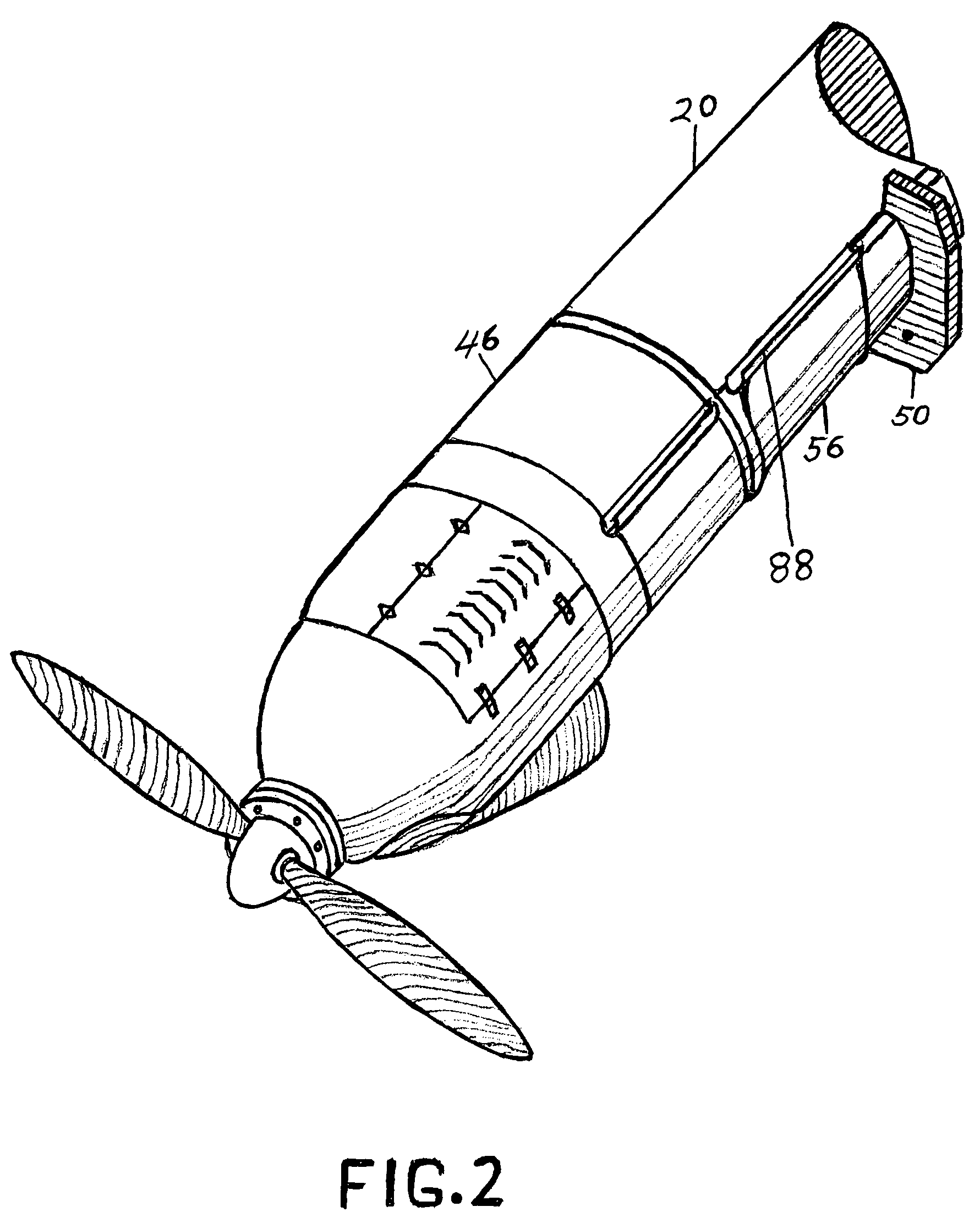Lift unit for vertical take-off and landing aerial vehicle
- Summary
- Abstract
- Description
- Claims
- Application Information
AI Technical Summary
Problems solved by technology
Method used
Image
Examples
Embodiment Construction
—PREFERRED EMBODIMENT
[0041]The structure of this lift unit, as shown in FIG. 1, is comprised of a smooth, polished cylindrical rotor, 20, cast in one piece of aluminum alloy. This rotor, 20, is designed to rotate at a high rate at a distance of a very small gap, 95, which is a fraction of a millimeter from the smooth, polished inside of a stator, 56, which is cradle shaped, and, also, cast of aluminum alloy. The rotor has axle segments, 22 and 24, cast of steel and affixed to its bases by nut and bolt fasteners, 76. Bearing bases and caps, 28,30,32, and 34, comprise competed bearings for the axle segments of the rotor. The completed bearing is fastened to the bases, 74 and 82, of the stator with nut and bolt fasteners, 76. Passages, 78 and 80, for the axle segments of the rotor are provided in the bases, 74 and 82, of the stator. The forward axle segment is cast with a shoulder, 26, to fit within a contour inside its bearing, shown with bearing base 34. The purpose of this shoulder ...
PUM
 Login to View More
Login to View More Abstract
Description
Claims
Application Information
 Login to View More
Login to View More - R&D
- Intellectual Property
- Life Sciences
- Materials
- Tech Scout
- Unparalleled Data Quality
- Higher Quality Content
- 60% Fewer Hallucinations
Browse by: Latest US Patents, China's latest patents, Technical Efficacy Thesaurus, Application Domain, Technology Topic, Popular Technical Reports.
© 2025 PatSnap. All rights reserved.Legal|Privacy policy|Modern Slavery Act Transparency Statement|Sitemap|About US| Contact US: help@patsnap.com



